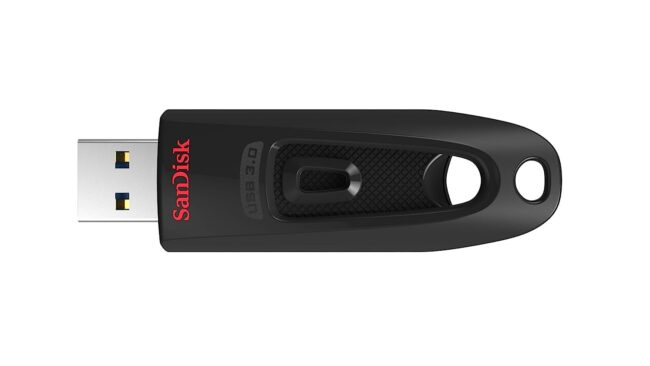Are you stuck in the bottleneck of slow data transfer? Propel your productivity into the future with USB 3.0. This article will illuminate why USB 3.0 is becoming the standard in data transfer, allowing you to harness its speed and efficiency.

Superior Speed and Efficiency
In an era of data-dependent operations, the introduction of of USB 3.0 is a breakthrough, offering 5 gigabits per second data transfer speeds – a significant leap from USB 2.0’s mere 480 megabits per second. This extraordinary speed upgrade drastically reduces time-consuming transfers of hefty files like high-definition videos, extensive databases, or large design files.
Beyond raw speed, USB 3.0’s efficiency shines through its full-duplex operation, a feature that facilitates simultaneous bidirectional data movement. This capability supersedes the half-duplex functionality of USB 2.0, effectively boosting workflows that demand constant two-way data movement.
In essence, the advanced speed and efficiency of USB 3.0 not only enhance the smoothness of data transfer operations and amplify productivity by curtailing the waiting time and bolstering multitasking. A true game-changer, USB 3.0 is paving the path for the future of data transfer.
The Power of Backward Compatibility
Embracing new technology often comes with the apprehension of losing compatibility with previous versions. USB 3.0 shatters this concern by offering full backward compatibility with USB 2.0. Imagine harnessing the remarkable speed of USB 3.0 while still retaining the ability to connect with older devices – it’s the best of both worlds.
This seamless transition is a godsend for those gradually upgrading their digital infrastructure. No rush, no fuss. With USB 3.0, you can upgrade at your own pace without the dread of obsoleting your current hardware.
More so, backward compatibility extends the life and usability of your existing devices. It’s not just about embracing the new; it’s about honoring the old, providing a smooth transition for everyone, regardless of their tech acuity.
In short, the backward compatibility of USB 3.0 strikes a delicate balance between staying on the cutting edge of technology and maintaining familiarity. It’s another strong argument that sets USB 3.0 as the front-runner in data transfer.
Adapting to the Demands of Modern Data Transfer
The daily data demands of modern society can be akin to a torrential downpour, overwhelming and relentless. The scale of data now being moved, from voluminous videos to high-resolution photographs, is nothing short of staggering. USB 3.0, however, has risen to the occasion, aptly handling these hefty data loads like a seasoned juggler.
The impact of this prowess resonates across several sectors. Take the film industry, for instance, where large-scale video files are a staple. USB 3.0 has expedited the transfer process, allowing artists and editors to share their creative visions more swiftly.
In the healthcare sector, where immense patient databases are moved daily, USB 3.0 ensures fast and secure transfers. USB 3.0 isn’t just another hardware upgrade; it’s a response to the data-hungry demands of our modern age. Its robust data-handling capabilities are revolutionizing how we transfer, store, and access data.
Overcoming Challenges with USB 3.0
In the ever-evolving realm of dat a transfers, USB 3.0 proves itself as a reliable ally, ready to tackle the hurdles that come its way. Large file sizes, delicate data integrity, and timeconstraints are some of the challenges it fearlessly confronts.
Consider the scenario of transferring intricate 3D architectural designs. These massive files could overwhelm older USB versions, but USB 3.0 handles them effortlessly, showcasing its ability to handle even the most demanding tasks.
Similarly, in large-scale digital events, where time is of the essence, USB 3.0 ensures prompt distribution of vital files to attendees.
The intricate interplay between technology and its challenges is a perpetual dance, but USB 3.0 takes the spotlight in this performance. Its ability to surmount obstacles has garnered widespread admiration, increasing adoption across various industries.
With USB 3.0 by your side, you can confidently navigate the challenges of modern data transfers, knowing that you have a reliable and efficient solution at your fingertips.
Paving the Way for Future Advancements
USB 3.0 has set the stage for exciting advancements in data transfer technology. Its widespread adoption and success have opened doors to new possibilities.
Imagine a bustling tech theatre where innovation takes center stage. USB 3.0 has been the star; now, USB 3.1 and 3.2 are stepping into the spotlight.
These newer versions build upon the progress made by USB 3.0, offering double the transfer speed and pushing the boundaries of what’s possible.
In the realm of technology, each success paves the way for the next groundbreaking innovation. USB 3.0 has ushered in a future filled with endless possibilities. It will be remembered as the catalyst that accelerated our journey into the future of data transfer.
As the torch passes from one generation to the next, USB 3.0’s impact remains significant. It has set the foundation for further advancements, shaping the data transfer landscape and driving us toward an exciting future.



















